What Makes Community Radio Unique
Table Of Contents
Key Takeaways
- Revealing the Distinctiveness of Community Radio stations
- Focus on Primary Characteristics of a Community Radio Station
- Community Radios: Enhancing Diversity and Representation
Unveiling the Uniqueness of Community Radio
Community radio stations hold a distinctive place in the media landscape, offering a platform that embodies inclusivity and empowerment. The unique aspect of community radio lies in its personalized content and direct communication with listeners. Unlike mainstream media outlets, community radio stations provide a chance for community members to actively participate in the creation and broadcast of programs. This ethos of co-operation and warmth fosters strong connections within the community, making it a vital hub for dialogue, information sharing, and entertainment. What makes community radio unique is its ability to amplify the voices of marginalized groups and create a space where everyone, regardless of background or status, can contribute to the vibrant tapestry of radio content.
Briefing the Concept of Community Radio
Community radio is a vital platform that offers a distinct advantage in the media landscape. What makes community radio unique is its suitability to address the nuances of specific communities, such as the Afro-Caribbean community in Bristol or the Bangladeshi community in Surma. Unlike commercial or mainstream radio stations that focus on hits or profit, community radio stations like J�7@i�zz �kt9�i�`1 prioritize community participation and empowerment, ensuring that their content aligns with the communication needs and cultural traditions of the listeners. Additionally, community radio stations like Surma or UEPG provide a channel for talent to flourish, enabling local voices to be heard and for diverse perspectives to be shared within the community.
Definite Uniqueness in Community Radio
Community radio stations possess a definitive uniqueness that sets them apart from other forms of media outlets. What makes community radio unique is its unwavering focus on serving the local community, enabling members to have a direct say in the content and programming. The personalized content and direct communication foster a sense of inclusivity and empowerment among listeners. With a strong emphasis on grassroots involvement and community-driven initiatives, community radios like the Pastapur Initiative not only showcase a diverse range of voices but also cater to the specific needs and interests of their local audience.
A standout feature that adds to the distinctiveness of community radio stations is the way they prioritize the development and inclusion of local talents and skills. By creating platforms for local artists, radio station staff, and volunteers to showcase their work, community radios like the Highlands Radio Station foster a sense of belonging and pride within the community. This emphasis on local talent not only enriches the cultural landscape but also provides a means for individuals to hone their skills and gain exposure. Moreover, community radio support funds such as the Dunaway Community Radio Fund play a crucial role in sustaining these stations, ensuring that they continue to serve as vital pillars within their communities.
- Emphasis on serving local community
- Direct involvement of community members in content and programming
- Foster inclusivity and empowerment among listeners
- Prioritization of local talents and skills development
- Creating platforms for local artists, staff, and volunteers
- Enriching cultural landscape and providing exposure
- Sustainability through community radio support funds
Spotlight on Main Attributes of a Community Radio Station
When delving into the spotlight on the main attributes of a community radio station, it’s imperative to highlight what makes community radio unique. Community radio stations like the one in Faridabad have become bastions of inclusivity, emphasizing personalized content and direct communication with members of diverse nationalities and backgrounds. These stations not only provide a platform for community members to voice their perspectives and concerns but also serve as vehicles for empowerment through inclusivity. By offering production services, resources, blog content, university radio guides, case studies, webinars, and courses, community radio stations like the one in Faridabad inspire many individuals to become proactive and engaged in their local media landscapes. The head-volunteer, station manager, and spokesperson play pivotal roles in negotiating station funding, acquiring equipment, and coordinating volunteer efforts to ensure the station’s success. With an emphasis on community participation and development trust, community radio stations have a profound impact on society, fostering a sense of belonging and lifting voices that may otherwise go unheard.
Personalized Content and Direct Communication
Community radio stations are known for providing personalized content and fostering direct communication with their audience. This unique model of broadcasting news, events, and festivities ensures that the content resonates with the local community. By allowing families and community members to actively participate in programming through community power, these stations create a sense of ownership and inclusivity. Presenters are encouraged to engage with listeners, bridging the gap between the station and its audience. This level of interaction sets community radio apart from traditional broadcasting outlets, making it a vital platform for sharing diverse voices and perspectives within the community.
Empowerment through Inclusivity
Community radio stations hold a unique position in the media landscape due to their inclusive nature. By providing access to airwaves for diverse voices and perspectives, community radio stations like SAFA Radio in South Asia empower individuals to share their stories and opinions freely. Through community support foundations and the commitment of dedicated radio practitioners like Mpho Mhlongo, these stations play a crucial role in amplifying community assets and inspiring local residents to become active contributors to the radio content. This empowerment through inclusivity not only enriches the radio insights but also creates job opportunities for individuals who may not have had a platform to showcase their talents otherwise.
Moreover, by prioritizing inclusivity in their content and management structures, community radio stations like SAFA Radio and Khoi FM project a strong sense of community development and self-management. These stations aim to bridge the gap between mainstream stations and local communities by focusing on representing the diverse perspectives of their target audience. Through their personalized programming and interactive approaches, community radio stations enable listeners to actively participate in debates, discussions, and celebrations that are relevant to their lives. This unique empowerment through inclusivity fosters a sense of belonging and ownership among the community, ultimately strengthening the station’s role as a catalyst for positive change.
Community Radios: Stepping Up Inclusivity
Understanding inclusivity in radio stations is crucial for recognizing the unique role that community radios play in promoting diversity and empowerment. By fostering a platform for direct communication and personalized content, community radios facilitate enhanced community participation and amplify voices that are often marginalized in mainstream media. The nature of community radio stations, with their emphasis on grassroots engagement and inclusiveness, sets them apart from other forms of broadcasting. Through origination programming that reflects the needs and interests of the local community, community radios become a powerhouse for activism and social change. Inclusivity in radio stations goes beyond just airing shows; it involves a deep-rooted commitment to giving community people a voice and a venue for expressing their concerns and agendas.
Understanding Inclusivity in Radio Stations
Community radio stations are distinctive in their inclusive nature, offering a platform for diverse voices and self-expression. These stations, such as those in Bangalore or North Charleston, strive to serve the community’s needs and interests, unlike larger commercial stations. From airing charity events to dispatching local news and polka music, community radio stations like Sitakunda’s emphasize a sense of love and sharing, enriching the lives of their audience members daily. The use of languages like Swedish or English, and the option to opt-out of advertisements, further highlights the personalized and community-oriented approach of these unique radio stations.
Advantages of Enhanced Community Participation
Community radio offers a platform for the voices of diverse communities to be heard, fostering a sense of belonging and empowerment. This engagement goes beyond merely tuning in to a radio dial; it encourages active participation from all members, allowing them to share their stories, music programs, and personal experiences. Through this medium, voices that are often marginalized or unheard, such as ethnic minority groups, LGBTQ+ individuals, and indigenous populations, can find a place to express themselves freely. This level of inclusivity is what makes community radio unique, providing a channel for individuals to connect, learn, and engage in meaningful dialogue within their own communities.
| Community | Key Features | Benefits |
|---|---|---|
| Ethnic Minority Groups | Representation and Cultural Preservation | Empowerment and Visibility |
| LGBTQ+ Individuals | Safe Space for Expression | Community Support and Advocacy |
| Indigenous Populations | Cultural Heritage Sharing | Platform for Storytelling and Education |
Conclusion
As we reflect on the attributes that make community radio unique, we unveil a world where personalized content and direct communication take center stage. With a focus on empowerment through inclusivity, community radio programming goes beyond traditional media boundaries to engage hearts and minds. The ability to foster enhanced community participation signifies a potent tool for advocacy, disaster management, and cross-learning. Through its distinctive service model, community radios bridge the gap between broadcasters and listeners, creating a touch that transcends the airwaves. This bond touches the very soul of a community, representing a profound shift towards democratization and empowerment in the media landscape.
FAQS
What is community radio?
Community radio is a type of radio service that is run by a local community for the local community. It typically focuses on providing content that is relevant and beneficial to the specific community it serves.
How is community radio different from commercial radio?
Community radio differs from commercial radio in that it is operated on a non-profit basis and is driven by the needs and interests of the local community rather than commercial interests. It often allows for more diverse and niche programming that may not be found on commercial stations.
What role does community participation play in community radio?
Community participation is a key aspect of community radio, as it allows for direct involvement of community members in the creation and dissemination of content. This involvement helps to ensure that the programming is reflective of the community’s interests and needs.
How does community radio promote inclusivity?
Community radio promotes inclusivity by providing a platform for underrepresented voices within the community to be heard. It allows for diverse perspectives and opinions to be shared, fostering a sense of belonging and representation for all members of the community.
What are some advantages of community radio over other forms of media?
Some advantages of community radio include its ability to provide personalized content tailored to the specific needs of the local community, its emphasis on direct communication with listeners, and its role in empowering community members through inclusivity and participation.







